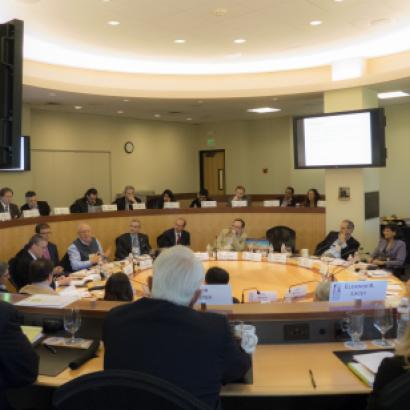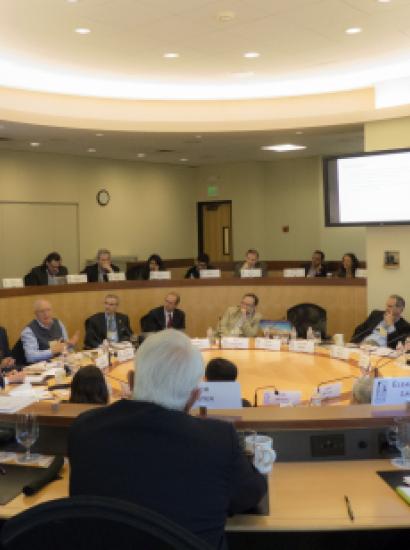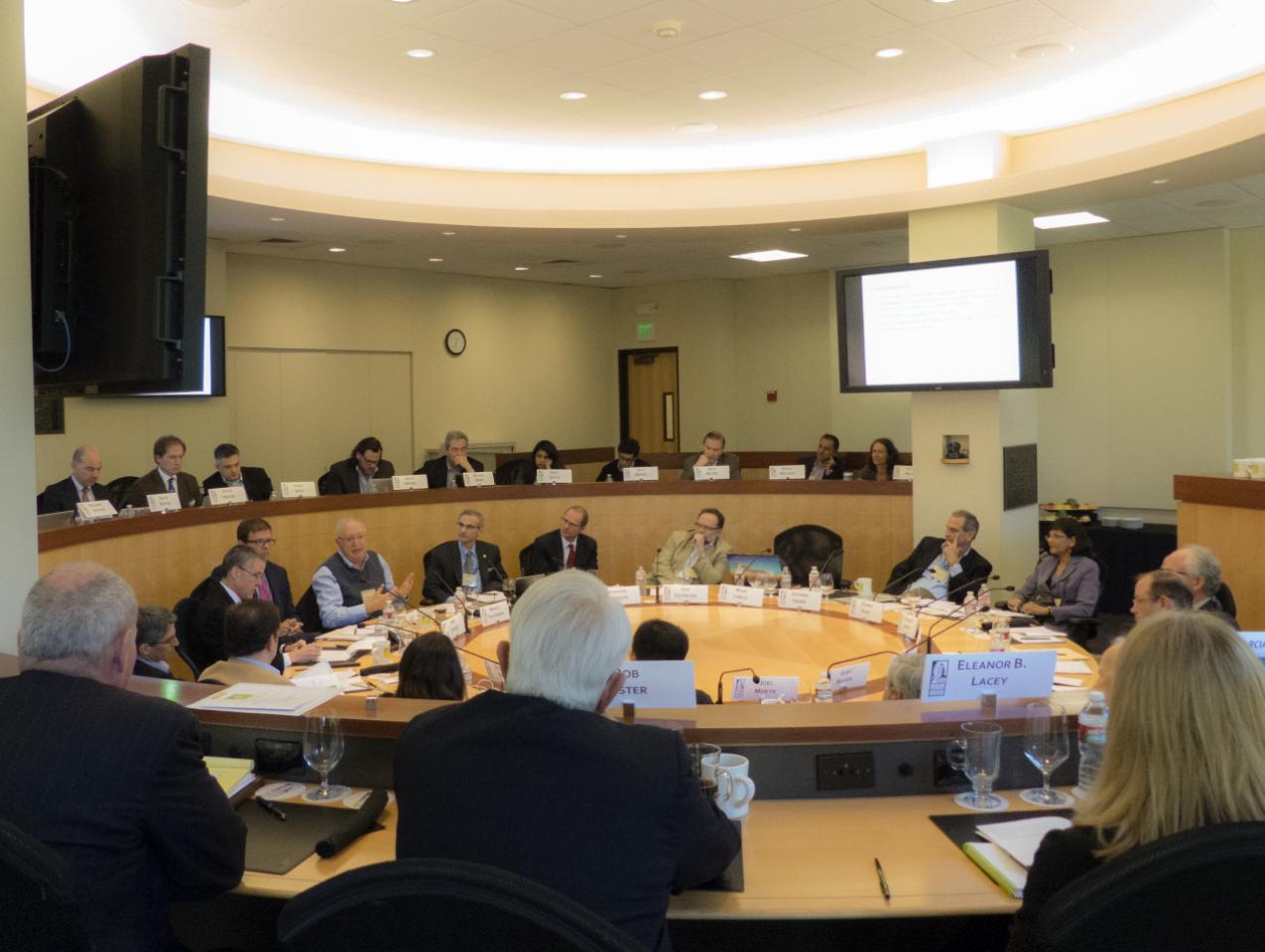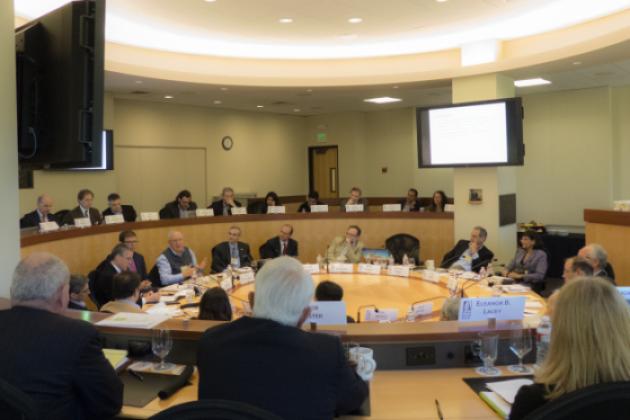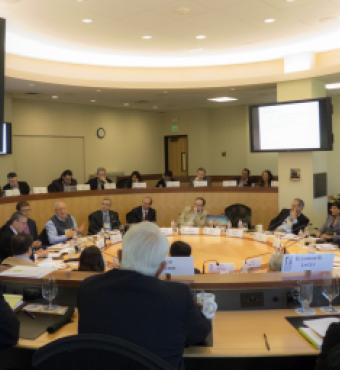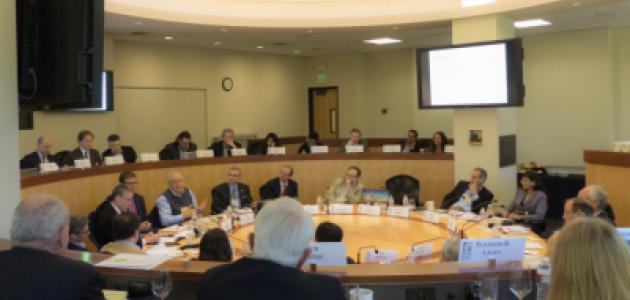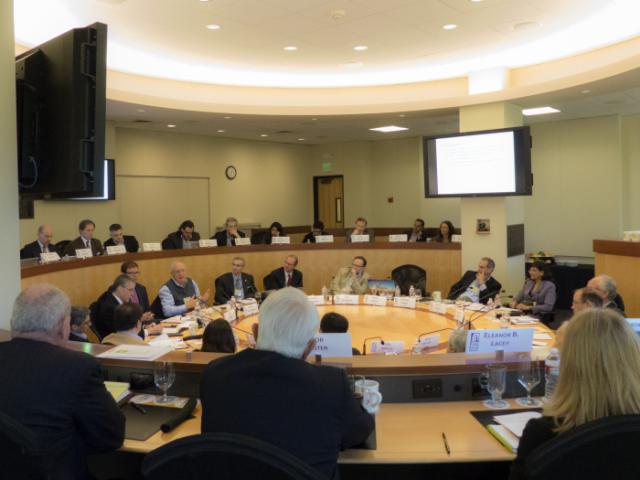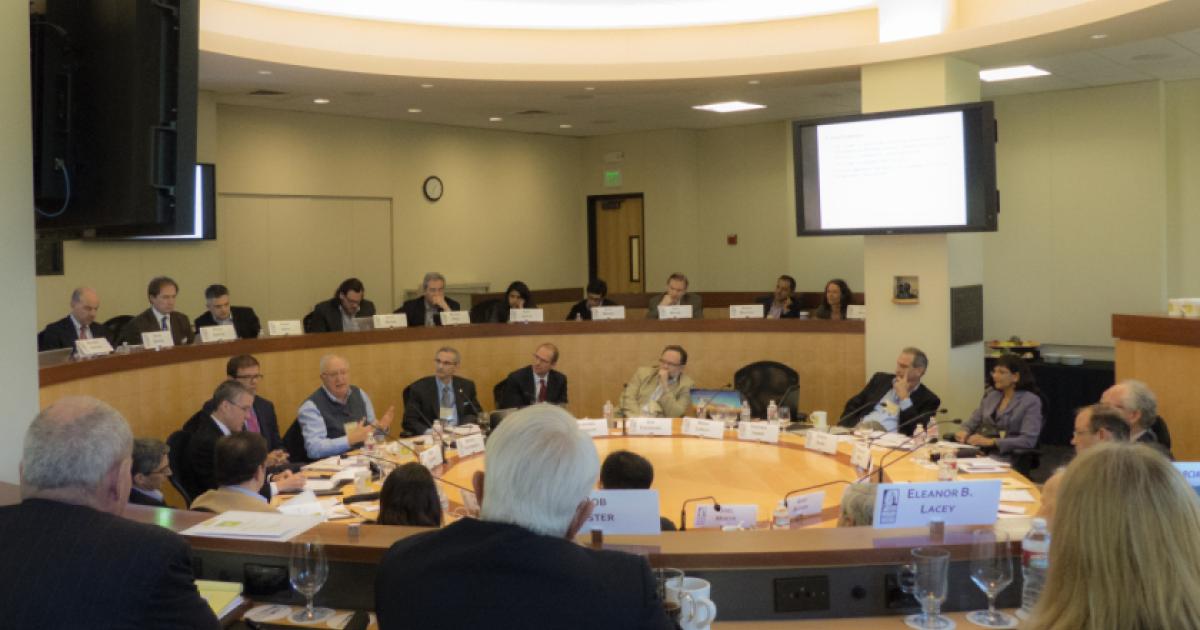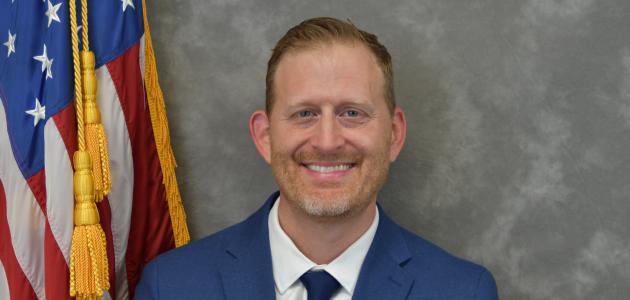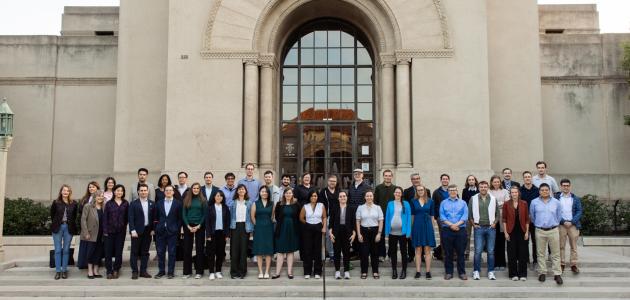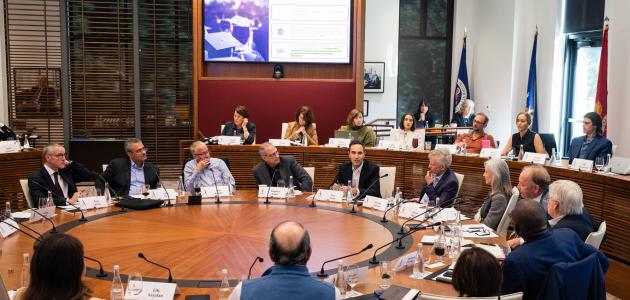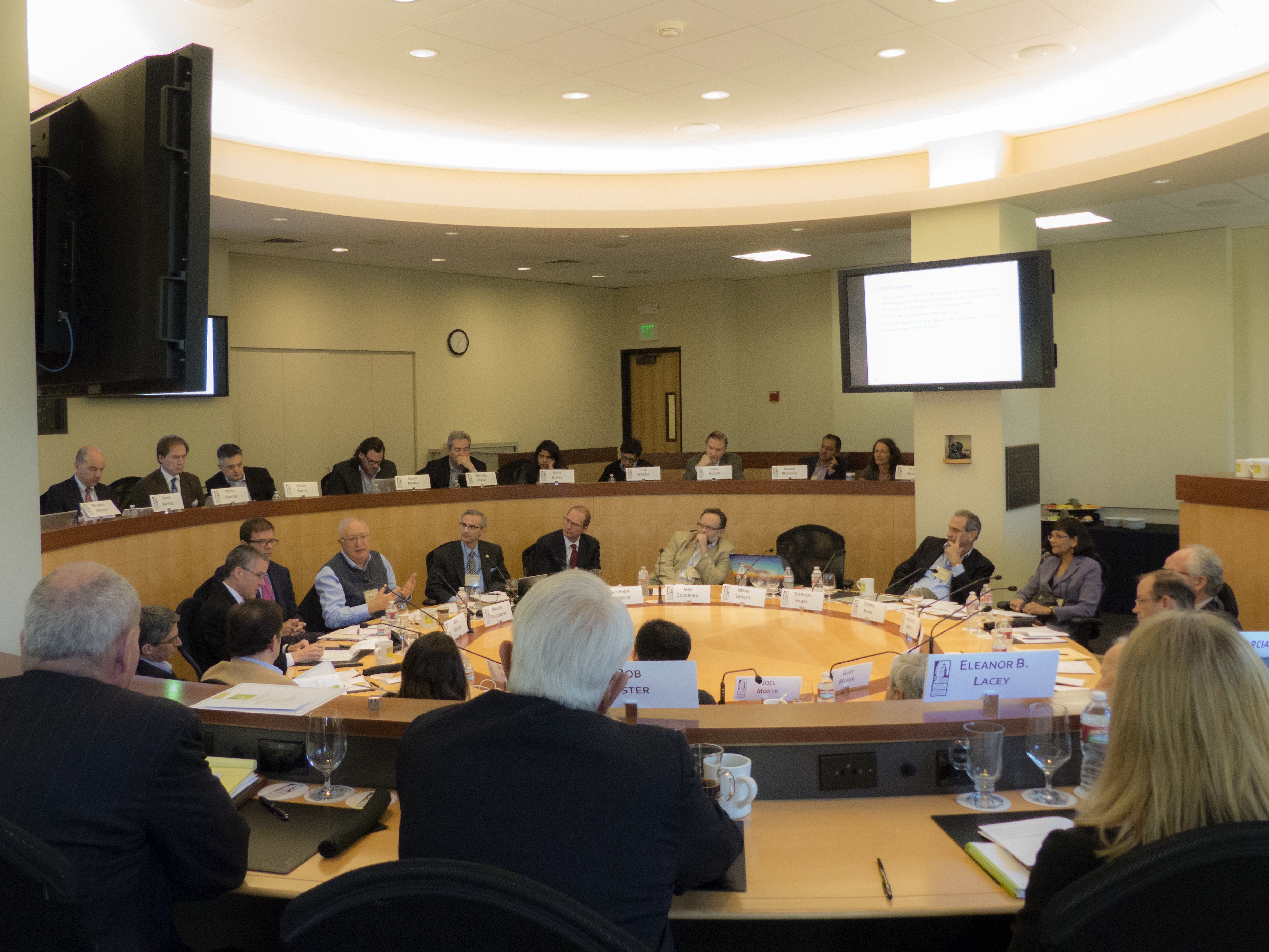
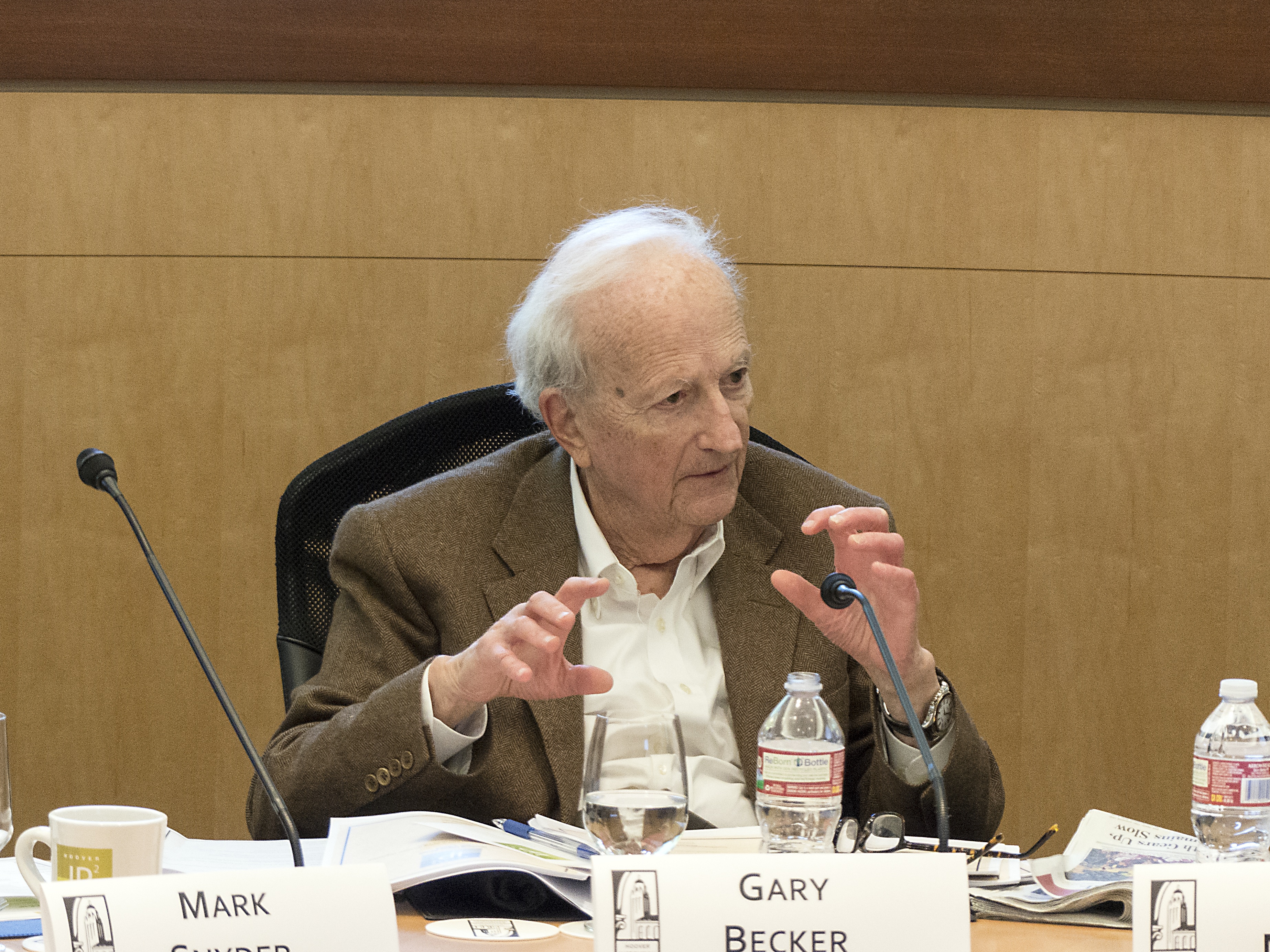
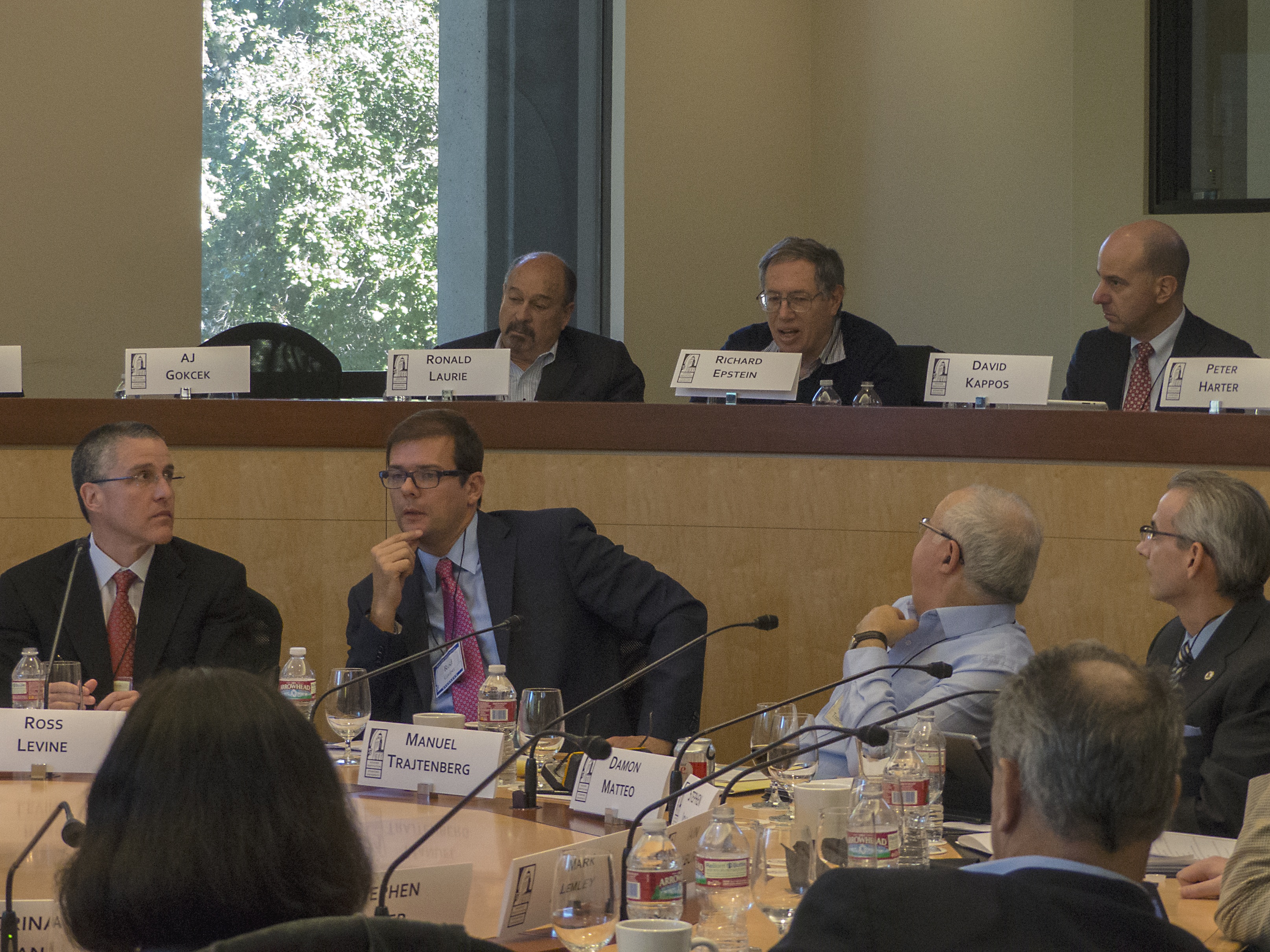
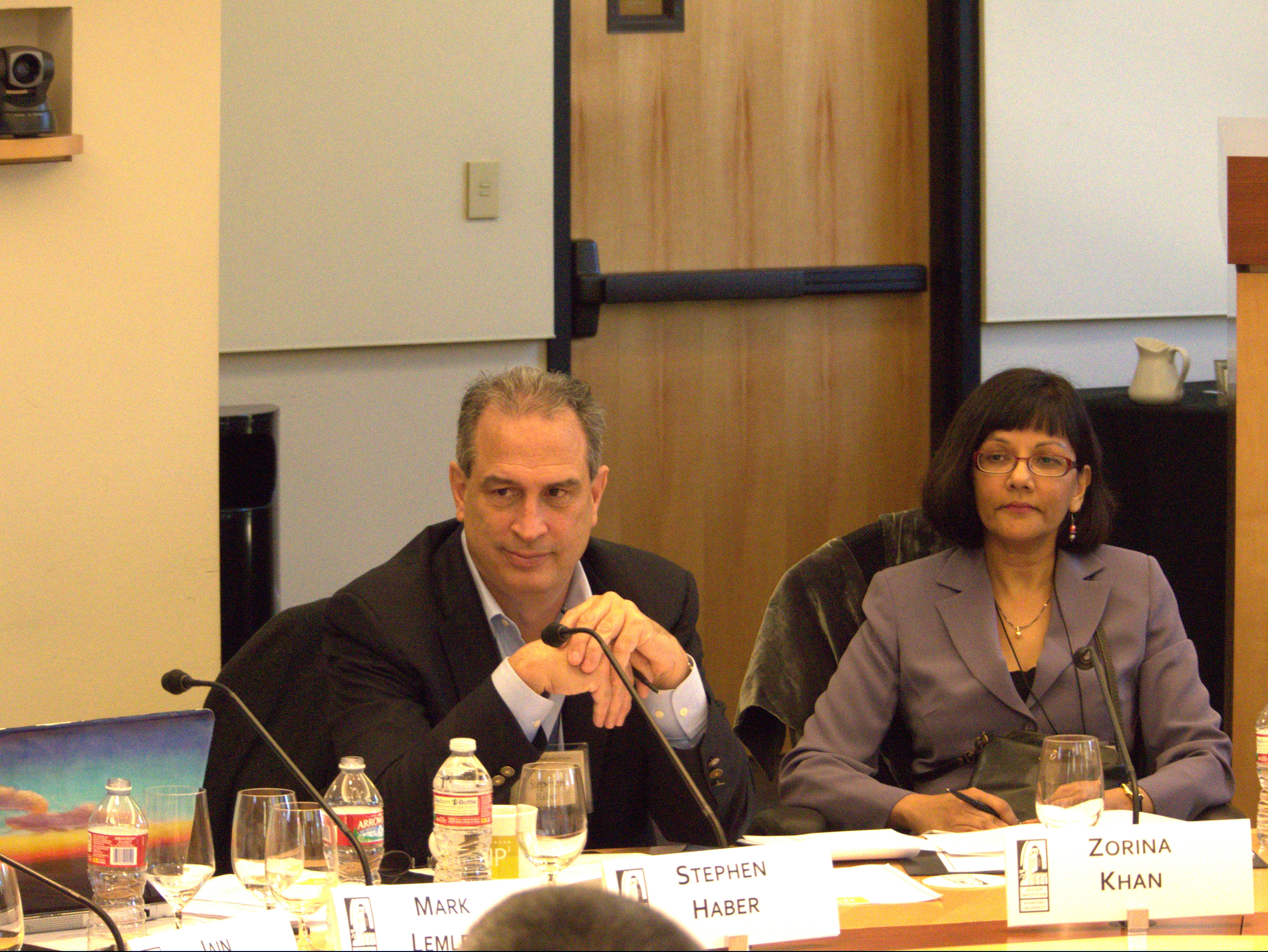
Does the US patent system frustrate or facilitate inventive activities, innovation, and economic growth? That is one of the questions a new Hoover Institution working group on intellectual property, innovation, and prosperity (Hoover IP2) is tackling.
The question of frustration or facilitation was at the core of Hoover IP2’s launch event, a two-day conference on patents and the innovation economy held at the Hoover Institution on January 31–February 1, 2014. Stephen Haber, the Peter and Helen Bing Senior Fellow at Hoover and the A.A. and Jeanne Welch Milligan Professor in Stanford’s School of Humanities and Sciences, chaired the conference; Haber also directs Hoover IP2.
In his opening remarks, Haber stressed that more interdisciplinary research in the US patent system is warranted. Bringing together the disparate perspectives, interests, and experiences of economists, legal experts, practitioners, and policy makers will serve all parties by providing law makers, regulators, and the judiciary with the academic research necessary for them to make informed decisions.
Hoover IP2 will support the data-driven, interdisciplinary research so characteristic of Stanford and Hoover. Haber emphasized that Hoover IP2 research will be “based on evidence and reason,” which he hopes will lead to rules-based decisions and legislation supported by evidence. The conference featured eight invited papers related to the interrelationship of patents and economic growth and performance.
At the conference, economic historian Zorina Khan questioned whether there is enough evidence to support claims of serious problems with the US patent system. She cited a long history—dating back to the start of the country—of assaults on the system. Although litigation rates are “high and growing” by historical standards, in light of the increasing number of patents issued, there is not much difference in patent litigation rates over time. During periods of intense innovation, such as the past decade or so, there have always been spikes in patent litigation, but they taper off over time, as Khan expects it will this time.
Manuel Molano stated that the “US patent system is one of the greatest inventions of all time.” Khan added that amendments have been made and changes implemented such that the US patent system remains effective. “Patents are like beacons” said US International Trade Commissioner Scott Kieff; they draw all to them—inventors, lawyers, business professionals—who have interest in the area.
Putting a further historical perspective on innovation, historian Naomi Lamoreaux stated that recessions often lead to more patents, as firms must innovate and evolve as they emerge from general economic malaise. In addition, workers—either laid off or on reduced hours—have more time for creative activities.
In the pharmacology and biotechnical industries, where there is much innovation, Khan reported relatively less patent litigation. Economist Iain Cockburn observed, moreover, that innovative drugs are not launched in markets where the patent system is weak, thus adversely affecting public health.
Economist Ross Levine’s research shows that financial innovation is necessary for sustained economic growth; as the world becomes more complex and technologically advanced, financiers must develop more sophisticated tools to evaluate the potential of inventions. As examples, he cited the expansion of the intercontinental railroad system, financed by investment banks, and the burgeoning information technology and biotechnology industries, financed by venture capital.
As the conversation shifted away from economics, Stanford Law School professor Mark Lemley, Damon Matteo, and others observed that the velocity of the market is important. At the current rate of technological change, inventions are often obsolete before the patent has been issued, rendering patent disputes moot.
Legal expert Richard Epstein said that property rights must be established first; only then can contract law can be applied. Kieff said patents appear when property rights are enforced; in the United States, those rights are enforced through the patent system, banking regulation, and securities and antitrust legislation. Because property rights are not strictly enforced in his native Mexico, Molano believes business activity is adversely affected.
Lemley engaged in a lively exchange with Spanish economist Jorge Padilla on how standard-setting organizations should settle Fair Reasonable and Non Discriminatory (FRAND) licensing disputes. Padilla believes the current consensus-driven approach to dispute resolution is efficient, as evidenced by extensive cross licensing, increased standardization, more competition, and technological breakthroughs and asked, “Why change what is not broken?”
Lemley argued that final-offer arbitration (known as baseball arbitration) will reduce litigation by giving an incentive for more reasonable offers by both sides. Padilla countered with an economic model showing that conventional arbitration leads to less standardization. Moreover, Padilla’s model indicates that baseball arbitration will undercompensate standard essential patent owners.
Law professor Henry Smith offered that “vagueness is not some kind of disease”; sometimes it is best to leave things undetermined so they can be addressed in context, not in the abstract. Epstein cautioned against trying to continually apply fixes to address unique, unusual, and unexpected occurrences.
Former SEC commissioner Troy Paredes asked the basic question: Are securities regulations enacted (per lawyers) to protect investors against fraud and consumers or (per economists) to protect the rights of inventors, promote incentive to innovate, and facilitate capital formation?
The members of the IP2 steering committee, which oversees the project’s research, are Stephen Haber; Hoover Institution fellows Richard Epstein, Richard Sousa, and Amy Zegart; Stanford GSB professor Wesley Hartman; Professors Naomi Lamoreaux of Yale, Ross Levine of UC Berkeley, and Henry Smith of Harvard; and former SEC commissioner Troy Paredes.
The next Hoover IP2 conference is scheduled for May 19–20, 2014.
See the January 2014 IP2 conference agenda and access conference papers here.







